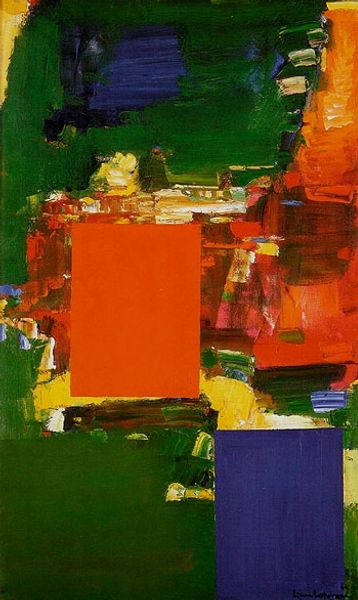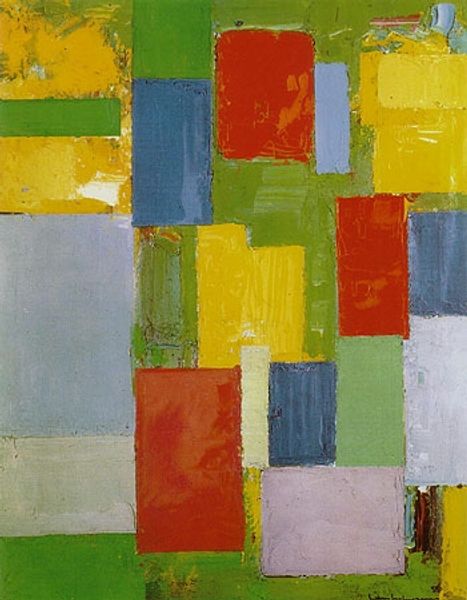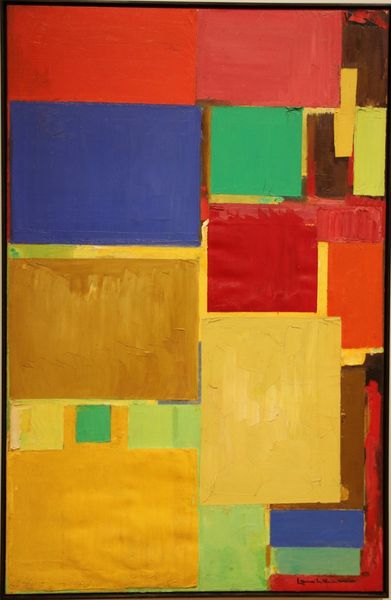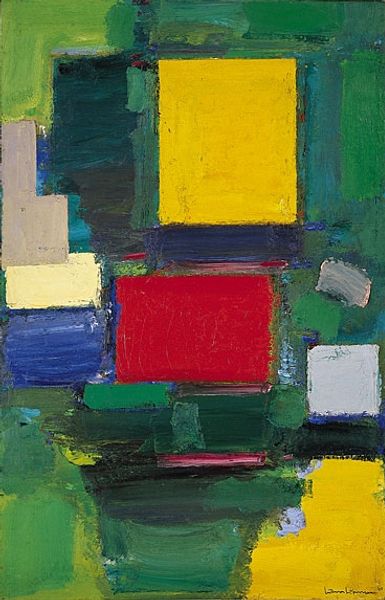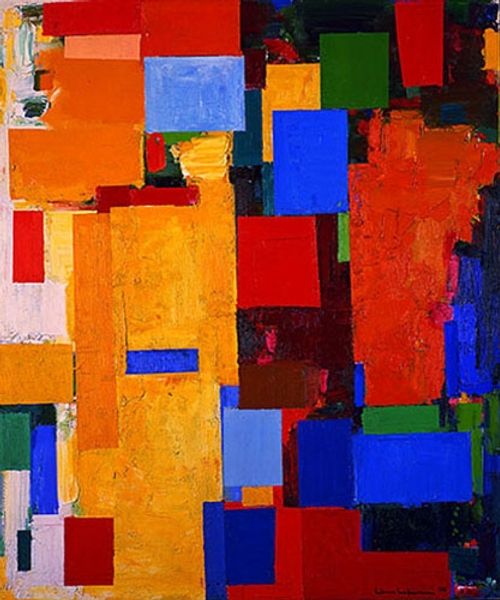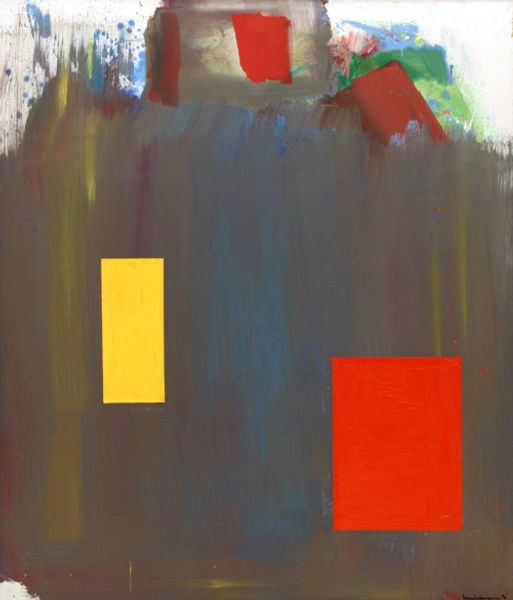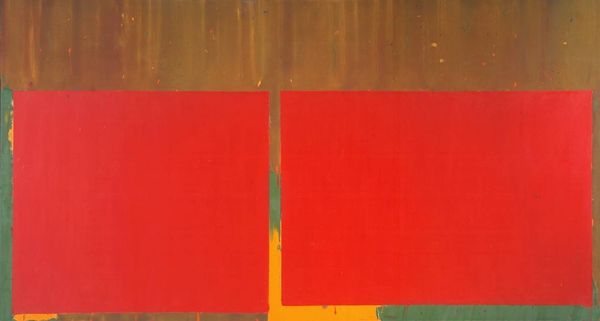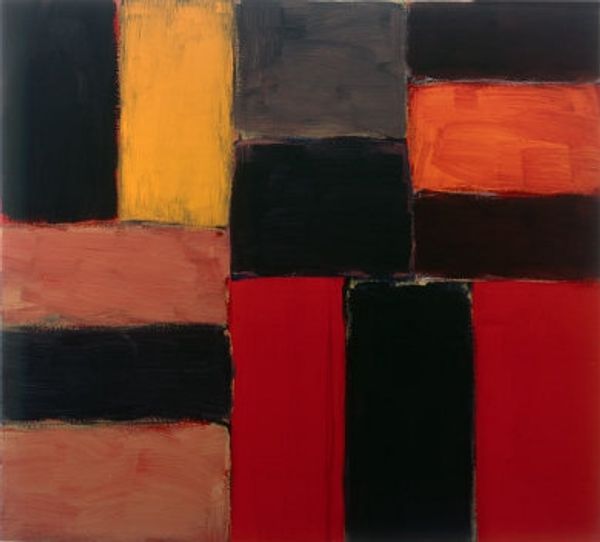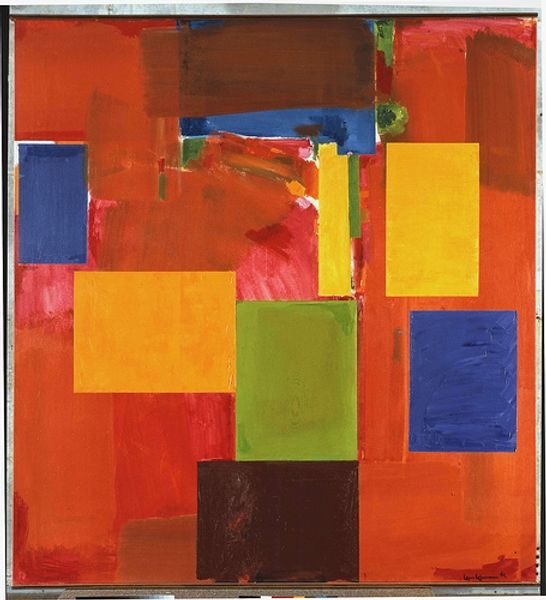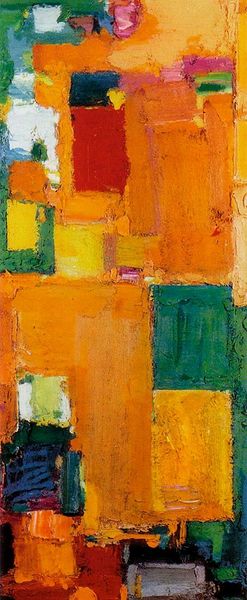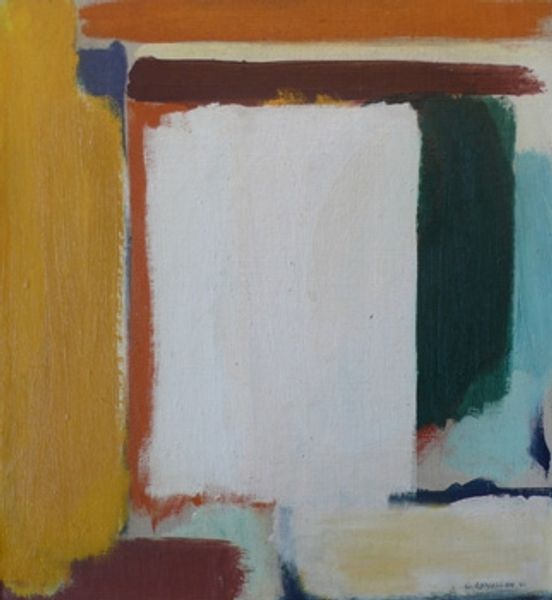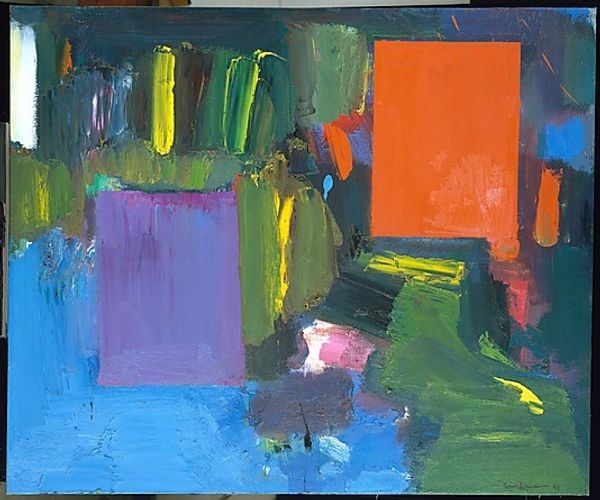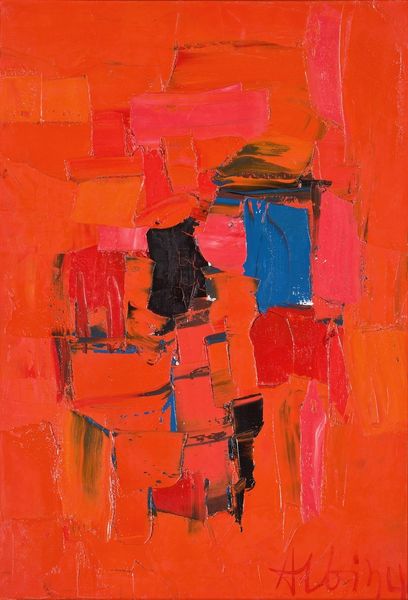
Copyright: Hans Hofmann,Fair Use
Curator: Looking at Hans Hofmann's "Pompeii" from 1959, it’s important to remember the artist's European roots and his confrontation with historical trauma as a German émigré in the US during the mid-20th century. This artwork encapsulates the layered, fraught emotional landscape of the post-war era, particularly regarding events like the Holocaust and the bombing of Hiroshima. Editor: The first thing that strikes me is the vibrancy despite the title; the juxtaposition of those saturated squares, like relics from a bygone, explosive era, hint at both the violence and resilience inherent in such a historical marker. Curator: Hofmann's work frequently explores the “push and pull” of color and form. In "Pompeii", these blocks can be seen to represent conflicting ideologies or forces present in society and the individual. How do these basic, archetypal geometric figures interact and sometimes even contradict each other to form the collective experience, and ultimately, identity? Editor: And you see echoes, don't you, of earlier symbol systems? Those rectangles resonate with everything from building blocks, to tarot cards, and even ancient mosaic patterns – universal shapes used to structure understanding of the world. This symbolic construction has been occurring across all of art history and he plays into it, like the past echoing into his modern world. Curator: It’s a painting of raw materiality too; you can sense the layers of oil paint, a kind of tangible residue left over. One cannot ignore how his choice of bright colors, such as that prominent teal or aquamarine area on the lower-left and red squares dominating, seems at odds with the suggested ruin. What does this explosion of vibrant energy tell us about interpreting ruins in history, and are we obligated to confront pain when understanding art and historical works like "Pompeii?" Editor: The fact that they remain so vibrantly coloured and solid hints at endurance – those primal geometric structures, perhaps a fundamental optimism that persists beneath layers of cultural trauma. Even destruction holds a powerful symbolic core for construction. It forces one to recognize life and build meaning around destruction as well as prosperity. Curator: I think situating this abstract expressionist artwork within its sociopolitical milieu sheds light on these critical interpretations of art and history. Thanks for giving me some new angles. Editor: Absolutely; the symbolic weight certainly lends itself to varied readings beyond formal technique, that is clear. Thanks for joining me!
Comments
No comments
Be the first to comment and join the conversation on the ultimate creative platform.
